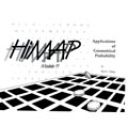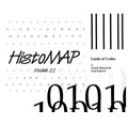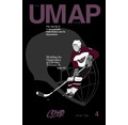Member Resources
COMAP offers members access to numerous mathematics and modeling programs, products, and materials in a variety of collections and formats. Our online library has more than 1500 resources. This page lists resources with most recent first. Please use the Search box or the filter options in the Find Resources menu to assist in locating desired products. For additional assistance or if you have questions, please don't hesitate to contact us.
Discretionary Review by the Supreme Court II: Analysis of the Model (UMAP)
This module is a continuation of an analysis of Supreme Court decision-making presented in Part I. The problem is to ...
The Dynamics of Political Mobilization II: Deductive Consequences and Empirical Application of the Model (UMAP)
This module consists of a framework which is developed to deduce the properties of a mobilization process based on ma...
General Equilibrium: A Leontief Economic Model (UMAP)
This unit discusses an application leading to large sets of linear simultaneous equations. It also calculates equilib...
The Growth of Partisan Support II: Model Analytics (UMAP)
This unit investigates mathematical properties of first order quadratic difference equation a) equilibria, b) local s...
Linear Programming in Two Dimensions: II (UMAP)
With this unit, the student will understand the nature of sensitivity analysis by investigating the ways in which the...
The Spacetime World: Foundations of Special Relativity Theory (UMAP)
With this unit, the student will be able to: 1) recognize the relative nature of simultaneity, and fundamental implic...
The Spacetime World: The Minkowski World (UMAP)
With this unit, the student will be able to: 1) recognize the speed of light as the limiting speed of ordinary partic...
The Spacetime World: Loedel's Spacetime Diagram (UMAP)
With this unit, the student will be able to: 1) relate the Loedel diagram to the required invariance of spacetime int...
History and Uses of Complex Numbers (UMAP)
This unit presents the history, the algebra, the geometry, and a few uses of complex numbers, including complex squar...
Orthogonal Projections and Applications in Linear Algebra (UMAP)
This module demonstrates how real applications require orthogonal projections in abstract linear spaces. The material...
Elementary Cryptology (UMAP)
This module discusses a few of the methods used in earlier times to illustrate the nature of cryptology, then discuss...
Basic Analysis of Z12 Music Chords (UMAP)
This module teaches how to use the additive group Z12 and a group of musical transformations called the twelve-tone o...
Geometric Programming (UMAP)
This module presents a simple method of optimization that: 1) tells how much an engineering design would cost before ...
The Hardy-Weinberg Equilibrium (UMAP)
This module uses elementary probability to show how genotypes in a population reach an equilibrium in a single genera...
Measuring Stream Discharge: A Precalculus Field Exercise (UMAP)
This module consists of a set of four collaborative field-based exercises and labs. All of the materials derive from ...
Waves and Strong Tides (UMAP)
This module analyzes the motion of water underneath a surface wave in the ocean in order to determine formulas for th...
Graphs, Digraphs, and Rigidity of Grids (UMAP)
This module studies the rigidity of frameworks made of rigid rods in the plane that are connected by two-dimensional ...
Pinochle Numbers (UMAP)
This module uses the setting of the card game of pinochle to develop and practice counting techniques, including comb...
How to Win at Nim (UMAP)
This module uses a variant of the Moore Teaching method to stimulate the students to derive the theory of impartial g...
The Terminator and Other Geographical Curves (UMAP)
This module seeks to: 1) strengthen students' intuition in multidimensional geometry; 2) consolidate their command of...
Differentials and Geographical Maps (UMAP)
This module seeks to: 1) strengthen the students' intuition in multidimensional geometry; 2) consolidate their comman...
Fuzzy Sets (UMAP)
This module explores elementary operations of set theory in a fuzzy setting and examines some applications of fuzzy s...
Closing in on the Internal Rate of Return (UMAP)
This module describes three iterative methods for solving equations, motivated by the computation of the internal rat...
Clock Time vs. Sun Time: The Analemma (UMAP)
In this module equations are constructed for the position of the sun in the sky at any time of day, any day of the ye...
Applications of Geometrical Probability (HiMAP)
Students are encouraged to experiment and estimate when analyzing probability problems, and use their estimates to de...
Drawing Pictures With One Line (HiMAP)
This unit uses Euler's Theorem and the fascinating one-line drawings of the Malekula people in the South Pacific to d...
Loads of Codes (HiMAP)
This unit explores the mathematics of protecting and communicating information, through cryptography and digital data...
UMAP Journal 19.4, Winter 1998
Table of Contents: GUEST EDITORIAL Social Sources for Renewal in Academic Mathematics ARTICLES Modeling the Orga...
Concepts of Math for Business: Background Mathematics (UMAP)
This unit contains several modules which introduce students to various concepts of math for business. The modules inv...
Concepts of Math for Business: The Mathematics of Finance (UMAP)
A unit that shows the student how to solve business problems involving percents, to use formulas to solve problems in...
An Application of Mathematical Groups to Structures of Human Groups (UMAP)
A unit that utilizes mathematical groups in studying structures of human groups. The purpose of this module is to lea...
Computer Problem Solving (UMAP)
A unit that will enable the student to: 1) explain the concept of algorithm; 2) distinguish algorithms from non-algor...
Line Reflections in the Cartesian Plane (UMAP)
A unit that involves line reflections in the Cartesian plane. Let f: R2 --> R2 be reflection in the line Ax + By +...
Why Do Cells Compete? (UMAP)
This unit introduces current data about brightness constancy and contrast in visual perception, and shows that data o...
Randomization Tests (UMAP)
In this module the data are permuted (divided or rearranged) repeatedly, in a manner consistent with the nature of th...
The Sturmian Sequence for Isolating Zeros of Polynomials (UMAP)
This module analyzes Sturm's theorem about zeros of polynomials and describes a finite procedure for finding the numb...
Find Resources
Browse More Resources
Search




